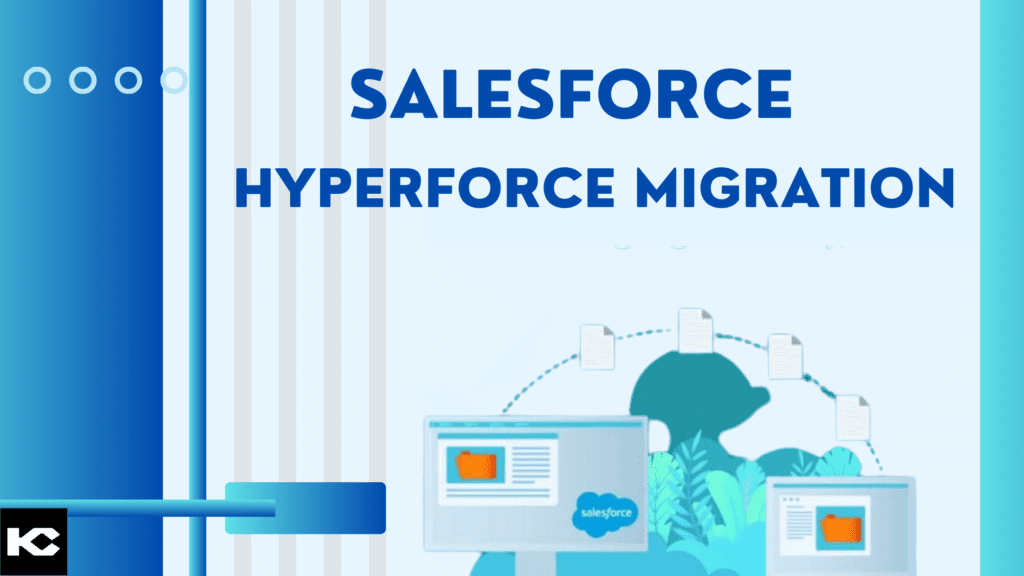Salesforce Hyperforce migration represents a pivotal shift in cloud architecture, offering unparalleled scalability and agility. This migration entails transitioning Salesforce’s infrastructure to a hyperscale public cloud infrastructure. It allows businesses to leverage the power of Salesforce atop any major public cloud provider like AWS, Google Cloud, or Azure, enabling them to operate closer to their customer base. The migration process involves careful planning, data restructuring, and infrastructure reconfiguration. It requires meticulous consideration of existing configurations, data structures, and integrations, ensuring a smooth transition without disrupting ongoing operations. Successful migration to Hyperforce results in improved scalability, data agility, enhanced security measures, and the ability to provide a seamless, efficient, and highly available platform for customers while adhering to industry-specific compliance standards. Here are Salesforce Hyperforce Migration Best Practices.
Salesforce Hyperforce Migration Best Practices
- Assessment and Planning: Begin with a thorough assessment of your existing infrastructure and evaluate the compatibility of your applications with Hyperforce. Create a detailed migration plan outlining timelines, resource allocation, and potential risks.
- Data Analysis and Cleansing: Analyze your data and ensure it is clean, updated, and optimized for migration. This includes identifying redundant or obsolete data and cleaning it before migration.
- Security Measures: Prioritize security during the migration process. Review and enhance security protocols to align with Hyperforce security standards. Ensure encryption, access controls, and compliance with industry regulations.
- Testing and Validation: Conduct comprehensive testing of your applications and data after migration to verify that everything works as intended. Test different scenarios to ensure functionality across various use cases.
- Training and Adoption: Train your team on Hyperforce features and functionalities. Ensure they are well-equipped to use the new environment effectively. Adoption is key, so offer ongoing support and resources.
- Backup and Recovery Plan: Create a backup and recovery plan to address any unforeseen issues during migration. This ensures that you can revert to the previous state if needed.
- Engage with Experts: Collaborate with Salesforce experts or consultants who have experience in Hyperforce migration. Their guidance and expertise can streamline the process and mitigate potential challenges.
- Documentation: Maintain detailed documentation of the entire migration process. Document configurations, settings, and any customizations made during the migration for future reference.
- Continuous Monitoring: Post-migration, monitor the performance of applications and infrastructure on Hyperforce. Identify any performance bottlenecks or issues and address them promptly.
- Feedback and Optimization: Gather feedback from users and stakeholders about the new environment. Use this feedback to optimize and fine-tune the Hyperforce setup for better performance and user satisfaction.
Explore more about our Salesforce Migration Services
Use Cases of Salesforce Hyperforce Tailored for Specific Industries
Certainly, here are some industry-specific applications of Salesforce Hyperforce:
- Healthcare Industry: Implement Hyperforce to securely manage patient records, streamline telemedicine services, and enhance data-driven decision-making for better patient outcomes.
- Retail Sector: Utilize Hyperforce to create personalized shopping experiences, manage inventory efficiently, and implement robust customer relationship management (CRM) strategies.
- Financial Services: Apply Hyperforce for secure and compliant handling of financial data, streamline banking operations, and provide personalized financial advice to clients.
- Manufacturing: Optimize supply chain operations, improve inventory management, and enable predictive maintenance using Hyperforce’s robust data capabilities.
- Telecommunications: Leverage Hyperforce for enhanced customer service, real-time data analysis, and management of network operations.
- Education Sector: Implement Hyperforce to manage student data securely, provide personalized learning experiences, and streamline administrative operations.
- Hospitality and Travel: Utilize Hyperforce to offer personalized travel recommendations, manage guest experiences, and handle bookings efficiently.
- Automotive Industry: Implement Hyperforce to manage sales, inventory, and customer service while leveraging data for predictive maintenance and vehicle performance analysis.
- Real Estate: Utilize Hyperforce for effective property management, client relationship management, and data-driven decision-making in real estate operations.
- Government Sector: Apply Hyperforce for citizen services, secure data management, and streamlined governmental operations.
Conclusion
Remember, Hyperforce migration is a critical process that requires careful planning, execution, and post-migration monitoring to ensure a smooth transition and optimal performance in the new environment.
Each industry can benefit from Hyperforce’s scalable infrastructure, advanced data capabilities, and enhanced security features tailored to meet specific industry needs.

